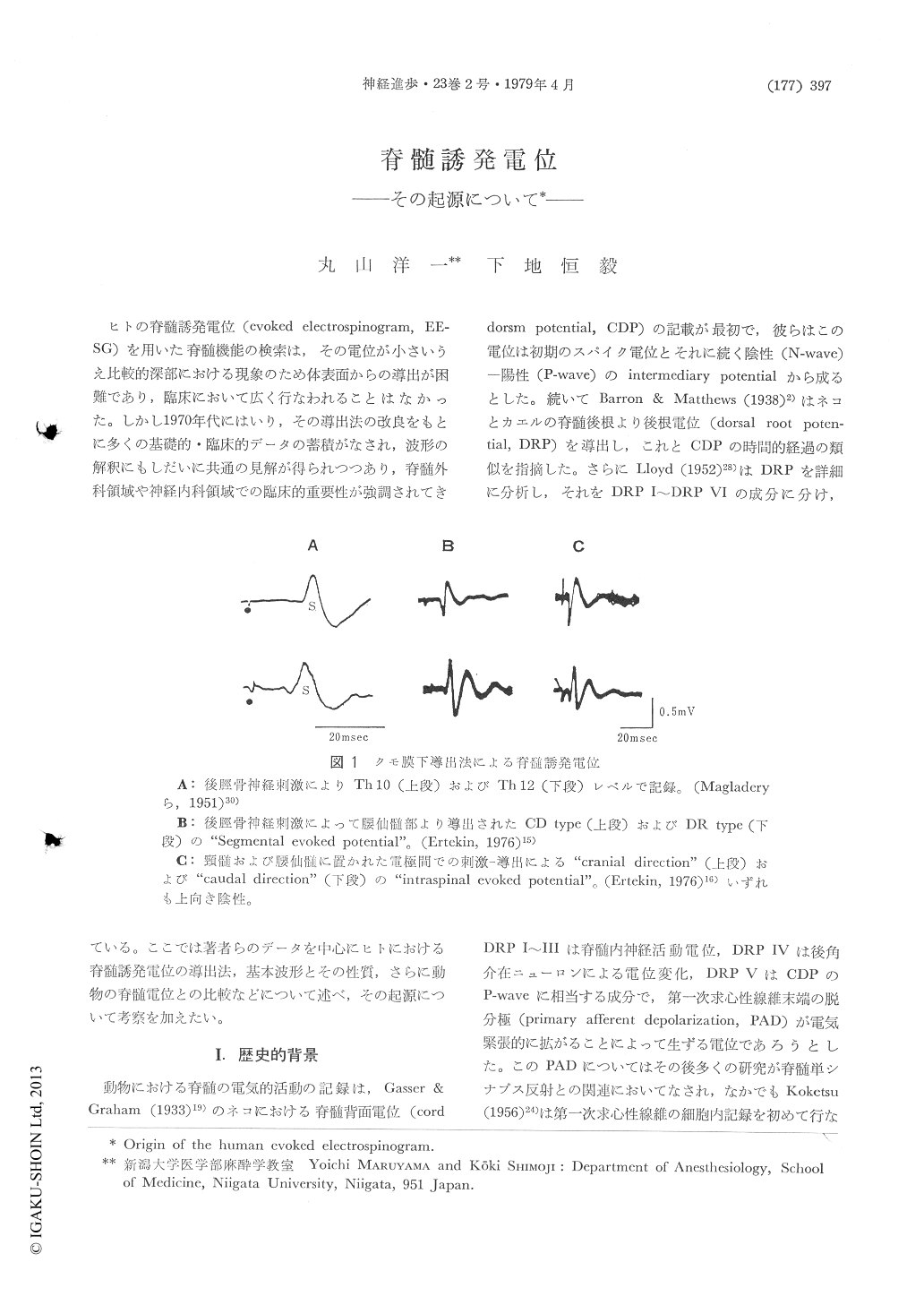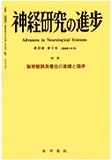Japanese
English
- 有料閲覧
- Abstract 文献概要
- 1ページ目 Look Inside
ヒトの脊髄誘発電位(evoked electrospinogram,EE-SG)を用いた脊髄機能の検索は,その電位が小さいうえ比較的深部における現象のため体表面からの導出が困難であり,臨床において広く行なわれることはなかった。しかし1970年代にはいり,その導出法の改良をもとに多くの基礎的・臨床的データの蓄積がなされ,波形の解釈にもしだいに共通の見解が得られつつあり,脊髄外科領域や神経内科領域での臨床的重要性が強調されてきている。ここでは著者らのデータを中心にヒトにおける脊髄誘発電位の導出法,基本波形とその性質,さらに動物の脊髄電位との比較などについて述べ,その起源について考察を加えたい。
The waveform characteristics and some properties of human evoked electrospinogram (EESG) recorded from epidural space were reviewed, and the origin of each component of human EESG were discussed comparing with the cord dorsm potential (CDP) or the dorsal root potential (DRP) recorded in animals.
The "segmental" EESG is a response of the corresponding spinal segments elicited by electrical stimulation of large peripheral nerves.

Copyright © 1979, Igaku-Shoin Ltd. All rights reserved.


